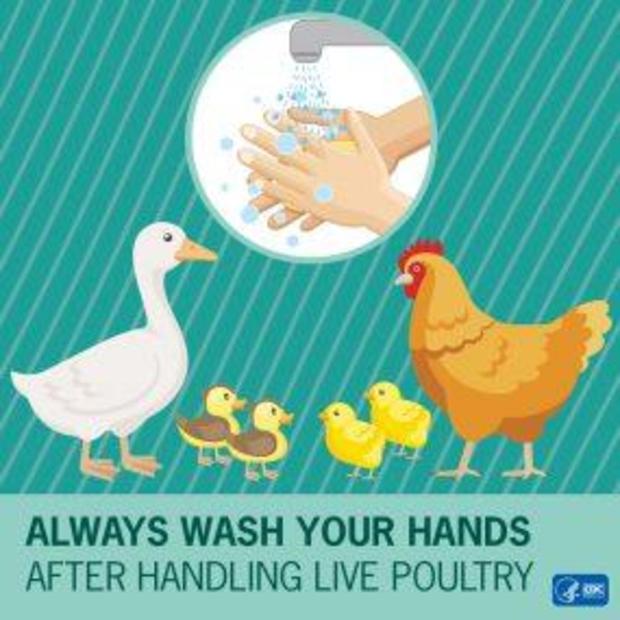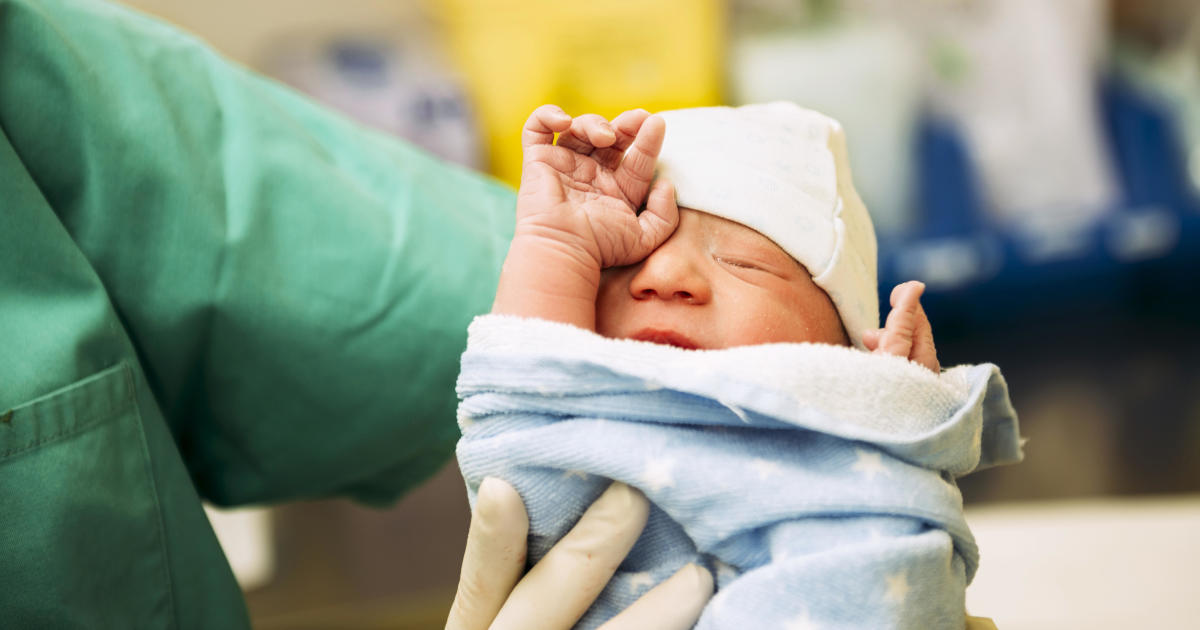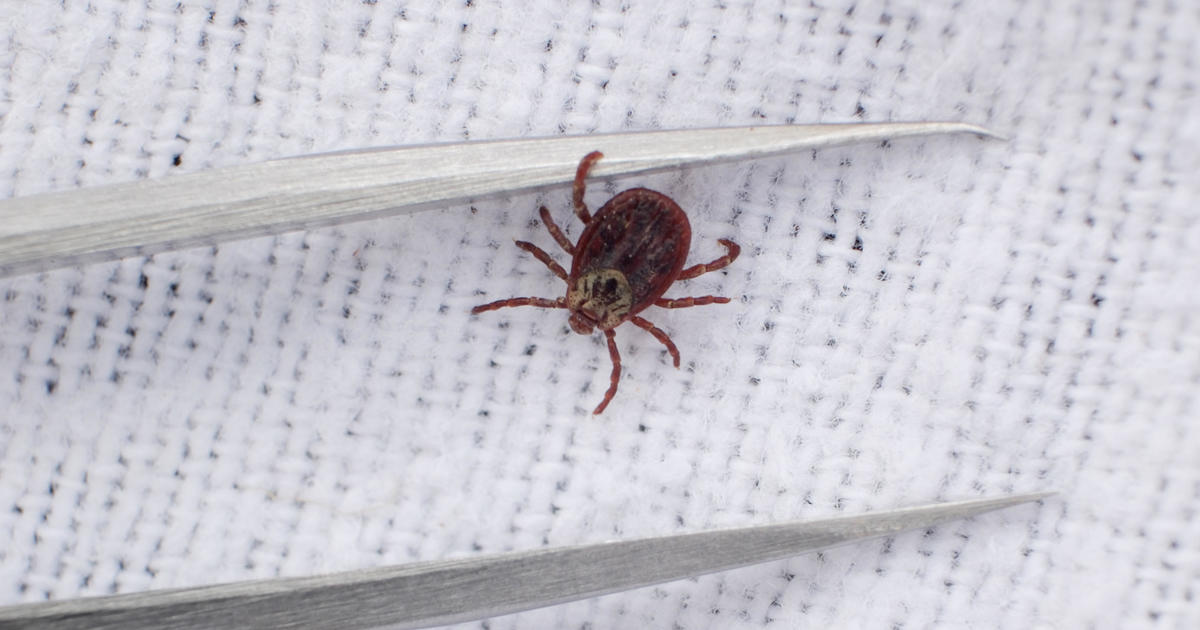The biggest source of salmonella outbreaks? It's clucking in U.S. backyards
- Backyard poultry flocks are increasingly popular among Americans looking to grow some of their own food and give their children a learning experience, but many are misinformed about how to do so safely.
- The backyard trend is linked to 768 salmonella-related illnesses so far this year -- including two deaths -- but the actual tally is far higher, according to the U.S. Centers for Disease Control and Prevention.
- Misperceptions abound about safely caring for chickens, hens, turkeys and ducks, but the CDC is hoping to help educate the public on simple steps that can offset the illnesses, nearly a quarter involving children.
From tainted pre-cut melons to pig-ear dog treats, there's been a slew of recalls this year due to outbreaks of salmonella infections. Yet by far the biggest source of the bacteria hasn't involved a recall at all. It stems from backyard flocks, the growing trend of raising chickens and other poultry for eggs and companionship.
"The ongoing multistate outbreak of salmonella linked to backyard poultry is the largest we've seen this year to date," a spokesperson for the U.S. Centers for Disease Control and Prevention told CBS MoneyWatch.
The agency has so far recorded 768 illnesses in 48 states this year, including 122 hospitalizations and two deaths, due to salmonella outbreaks related to home-raised chickens, hens, ducks and turkeys. That puts the country on track to exceed all of 2017's toll -- the largest recorded by the CDC -- when 1,120 people got sick and one person died from contact with backyard poultry.
The second-widest salmonella outbreak this year has involved pre-cut melon and appears to be over, but it resulted in 137 illnesses, including 38 hospitalizations, in 10 states. The third-worst outbreak is ongoing, and involves recalled pig-ear dog treats that have sickened 93 people in 27 states, 20 of them hospitalized.
Tens of thousands of illnesses
The salmonella tallies vastly underestimate the actual counts of illnesses, given for every case reported, another 29 are not, a CDC calculation that would put this year's illness count from salmonella attributable to backyard flocks at 22,272, with five months remaining in the year.
"We're already at 768 and it's July, so we're on track to have a really large number of cases -- multiply that by 29 and you really have the scope of what we're seeing," Dr. Megin Nichols, an epidemiologist in the CDC's outbreak response and prevention branch, said in a phone interview.
Especially troubling is nearly a quarter, or 24%, of the illnesses involve kids. This year, there are "156 children under the age of five that have come into contact with poultry and gotten sick," Nichols said. "Young kids are more likely to kiss, cuddle or snuggle with poultry and then may not wash their hands as thoroughly," she explained.
A Williams-Sonoma chicken coop for $2,000
The trouble stems in large part from a lack of public education about how to participate in an increasingly popular activity. The backyard chicken trend has been especially prevalent over the last 10 years, Nichols said. "People want to know about where their food comes from and teach their children."
Roughly 10 million, or 8%, of U.S. households had chickens in 2018, with ownership higher among households with young children, at 12%, versus 6% among households without smaller kids, according the American Pet Producers Association, an industry trade group.
"The number of backyard flocks in increasing. That's based on the phone calls I get on a daily basis from new flock owners and area veterinarians," Dr. Sherrill Davison, associate professor of avian medicine and pathology at the University of Pennsylvania's School of Veterinary Medicine, said.
Most people who have poultry in their backyard do so to have fresh eggs on hand and to keep the birds as pets, said Davison. Others with bigger flocks may sell eggs, or for use in their own restaurants, "a farm-to-fork situation," she added.
Baby chicks can run from $3 to $17, and egg laying hens can cost between $20 and $50. If you want a fancier breed of chicken, you'll have to pay a premium, according to MyPetChicken.com. Roosters are cheaper – they cost between $5 and $15 – but of course don't lay eggs.
The interest has prompted some unlikely retailers to jump into the home-farming business. Williams-Sonoma offers a cedar chicken coop for around $2,000 that houses hens and comes with a planter to grow herbs and vegetables. Wayfair sells an array ranging from a mesh-covered box for about $90 to a round-roof setup that resembles a small barn for around $5,600.
"Lots of misinformation out there"
Neither the CDC nor Penn's Davison is advising people against backyard poultry. They just want folks to be fully informed about what it entails.
"There's a lot of misinformation out there," the CDC's Nichols said. Many of those interviewed in outbreaks are first-time poultry owners unaware the animals can carry germs, she said. There's also a mistaken notion that if an animal is healthy, it can't carry salmonella, when in reality chickens can carry salmonella in their gut without it harming them, she said.
Another notion that the CDC would like to dispel is the idea that all chickens have salmonella, a falsehood that prompts people to feed them antibiotics, which then can cause resistant and more virulent strains, Nichols said.
"There are very simple steps to take to reduce the risk," said Davison, who like Nichols advised those with or considering backyard poultry to check out the CDC's guidelines. "What I do is talk about how to house the birds -- the key is to keep things clean and dry -- and after you work in the conveyer area, wash up so you don't bring anything inside the house."
Use extra shoes, plus soap and running water
People should not eat or drink anything while near their outside flock, and always wash their hands with soap and running water after touching their birds. Those with young children should be especially mindful, as kids will often want to hug birds, then put their hands in their mouths, reiterated Davison.
People with outdoor flocks should have one set of shoes for caring for the animals, which should not be worn inside, as germs from the bottom of their shoes can carry into their homes. "Rubber shoes are easy to clean and can stay outside," advised Nichols, who added an overcoat dedicated solely to outdoor poultry tasks is also a good investment.
And while people treat their flocks as pets, the animals should still stay outdoors. "We're finding a lot of people bringing their chickens inside to kitchens, bathrooms or kids' rooms," she added.




